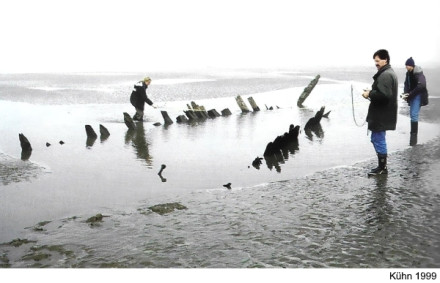History
This wrecksite of an early 20th-century steam-tug was discovered in the 1950's and was scrapped by the coastal population: Planks, metals and coals from the steam generator were recovered, thus the wreck was colloquially referred to by locals as "Kohlenschiff" (coal ship). The machine and generator were scrapped by a salvage company. Soon thereafter, the wreck remains were covered by sediments again. In the summer of 1994, the frames re-appeared. Due to the scouring effect, it took only six months until the wrecksite was almost entirely exposed again.

The site was investigated by Dr. Hans-Joachim Kühn (State Archaeology Department of Schleswig-Holstein) who identified the wreck as a steam-tug of the German Imperial Navy, which sank in 1912.
Description
| Length | 59 feet (18 m) |
|---|
References
- Kühn, H.-J. (1999).
Gestrandet bei Uelvesbüll - Wrackarchäologie in Nordfriesland.
Husum.